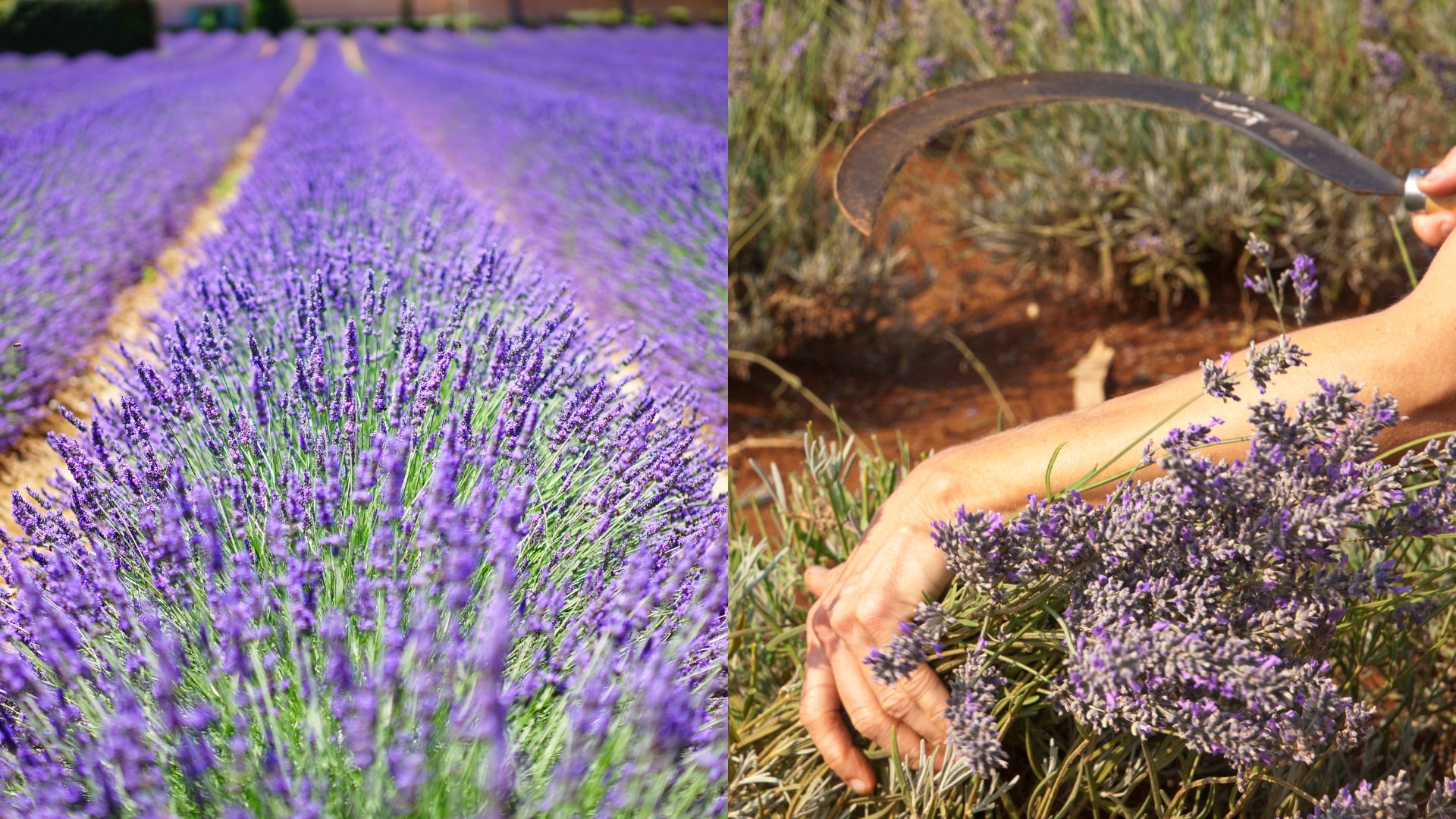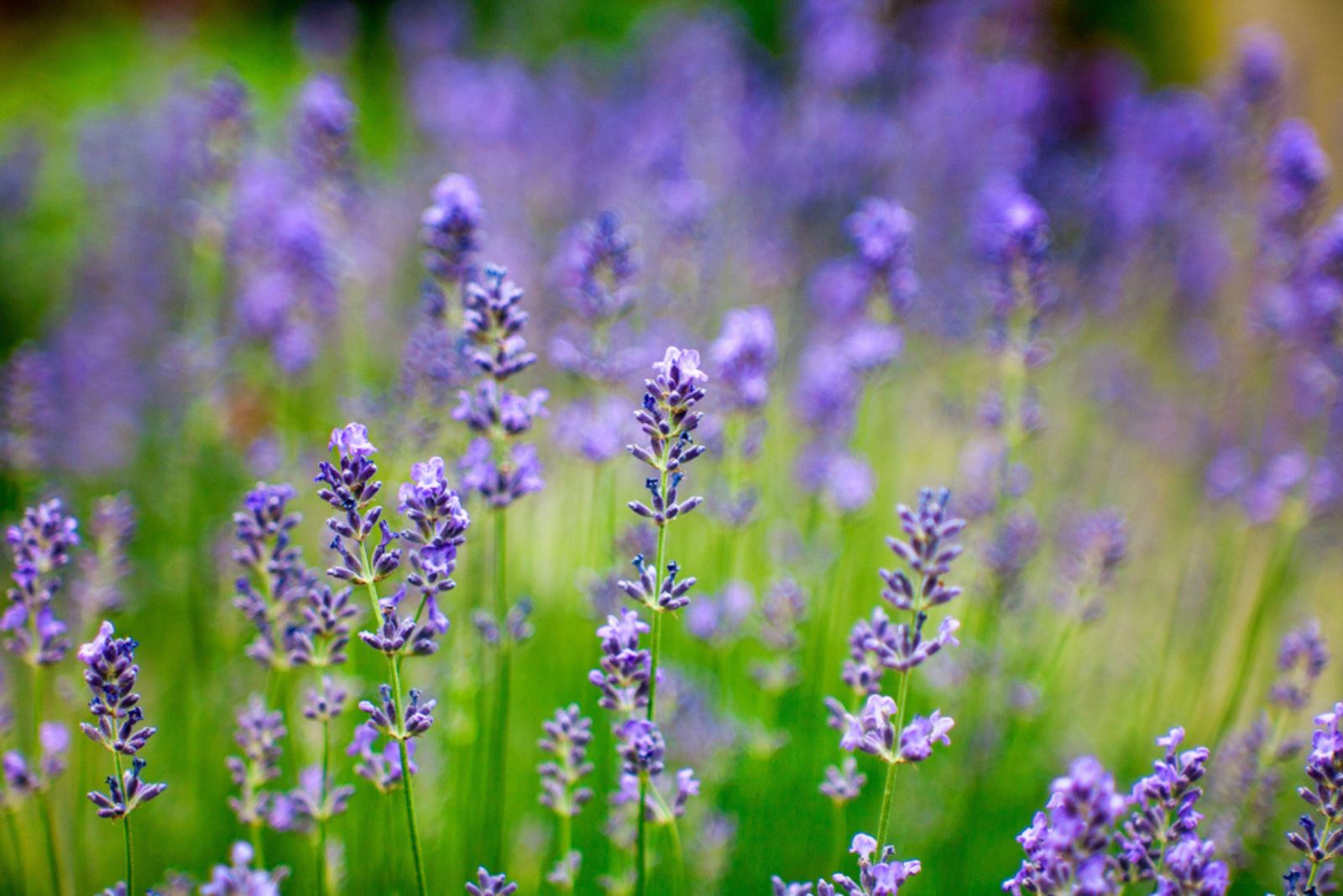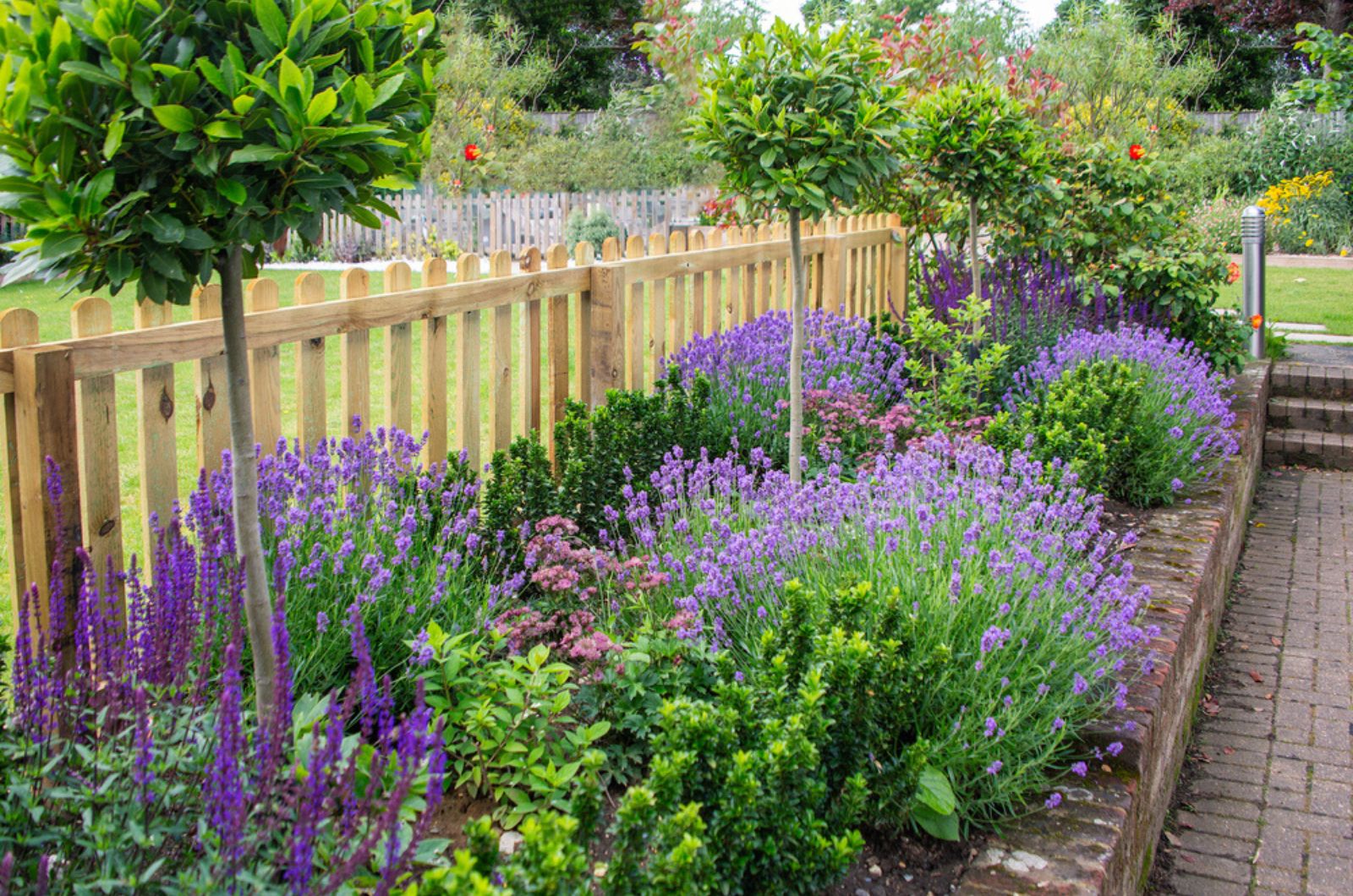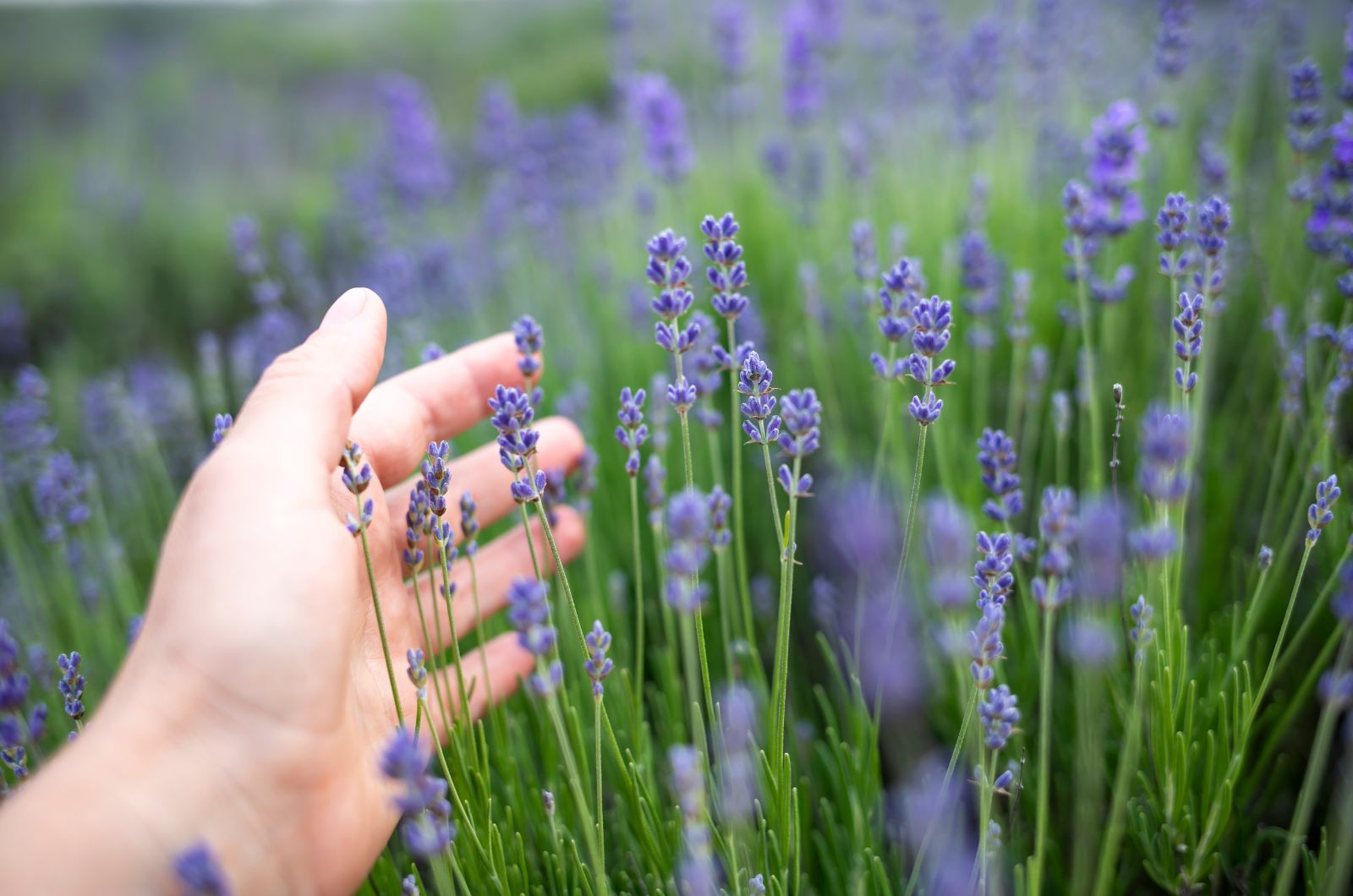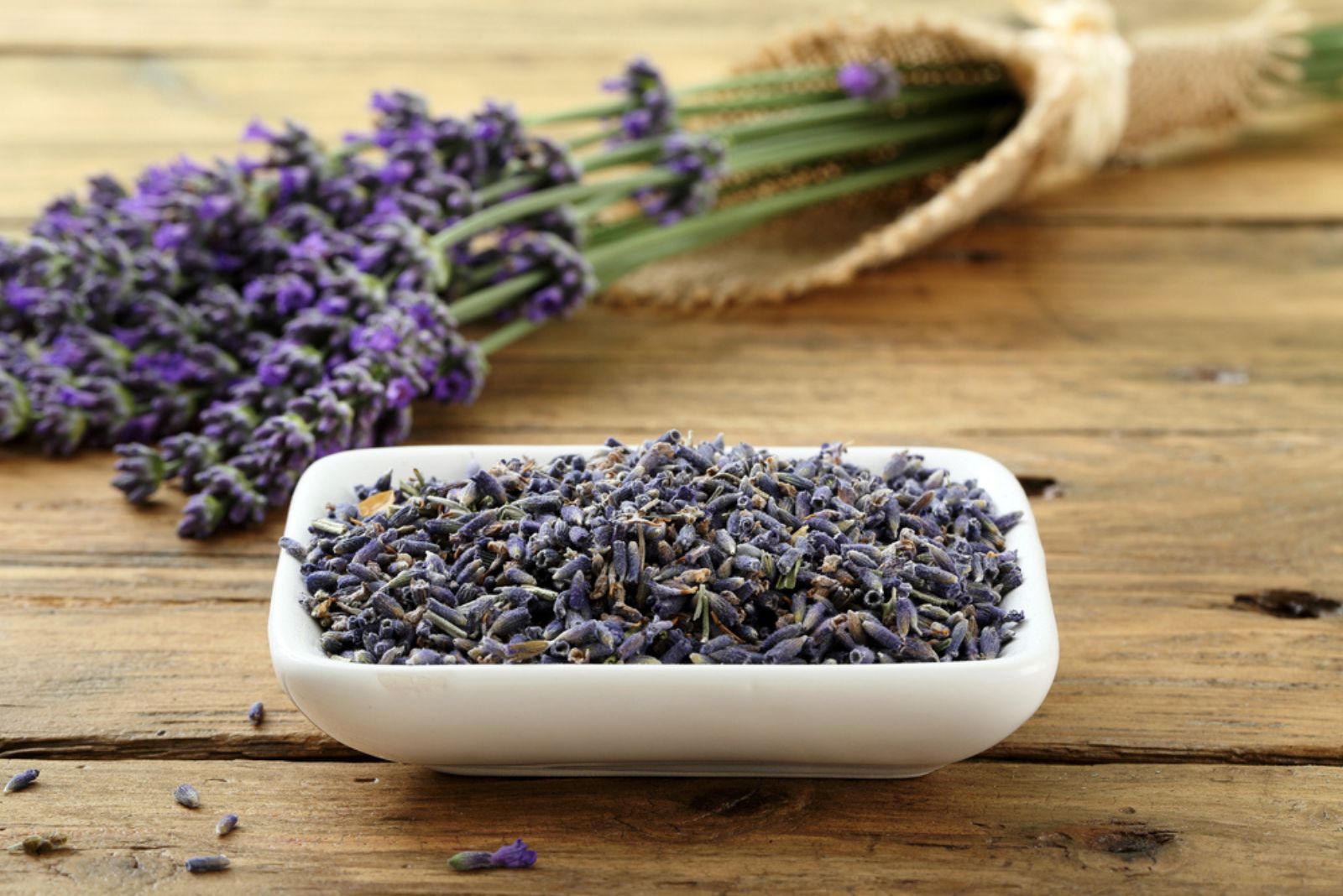With its stunning appearance, mesmerizing fragrance, and numerous medicinal and culinary applications, lavender is one of the most famous herbs out there!
Although lavender is relatively easy to grow, there are still some tips and tricks that you can use to get the most out of it.
In this article, we will share some of our valuable tips to help you successfully grow and care for your lavender plants. From choosing the right variety to providing optimal growing conditions, we’ve got you covered!
Let’s get started!
1. Find The Ideal Location
The first tip when it comes to growing lavender successfully is finding the right location for it. This herb absolutely loves the sun – it requires about 10 hours of direct sunlight in order to grow and thrive.
However, it can grow perfectly fine in places where it receives about 6 to 8 hours of direct sunlight each day.
If you are growing lavender in Florida, then it might get too hot for your precious plants. In this case, find a spot where they can receive enough sunlight in the morning, and not as much in the afternoon when the sun is the hottest.
Don’t plant it in shaded areas or under trees because then it might grow poorly.
2. Improve Soil Drainage
In addition to sunlight, lavender also requires well-drained soil. All types of lavender prefer very well-drained soil. To improve soil drainage, consider adding compost, sand, peat moss, or perlite to the planting area.
These will help prevent waterlogging and ensure that excess moisture doesn’t accumulate around the roots, which can lead to root rot (a fungal disease that can completely ruin your lavender).
Avoid compact, clay soils. You can also add a layer of mulch to help retain moisture and suppress weed growth.
3. Choose The Right Lavender Variety
You must choose the right lavender variety that is suitable for your region. There are many different lavender varieties available, each with its own unique characteristics and growth habits.
They are generally divided into three categories:
• French lavender (Lavandula dentata) – grows best in regions with hot summers since it thrives in USDA hardiness zones 8 through 11.
• English lavender (Lavandula angustifolia) – this lavender grows best in USDA zones 5 through 9. They are tolerant to winters and humid environments.
• Spanish lavender (Lavandula stoechas) – this variety thrives in USDA zones 6 through 11. It can tolerate higher humidity.
Remember that each variety has its own appearance and taste. If you are looking for the lavender with the best aroma, opt for the ‘Phenomenal’ variety. ‘Grosso’ lavender is the best for pest control, while any English cultivar has a strong flavor for cooking.
4. Water Adequately
You have probably heard that lavender is drought tolerant. Still, this doesn’t mean that you should not give it any water at all, especially if you grow from seeds.
However, giving too much water is not a good thing either because lavender is susceptible to root rot in waterlogged conditions. This is why it is better to have drier than soggy soil.
During the initial lavender growth stages, keep the soil slightly moist. Once the plant has established, you can water once a week or less if it has rained.
Always water thoroughly and near the base of the plant in order to avoid getting the leaves wet – this can promote fungal growth on the leaves.
If you are growing herbs in pots, then you should probably water them more often. Simply water the plants once the soil dries out. Always make sure that the pot has drainage holes so that the water can pour out.
5. Consider Companion Planting
Companion planting with lavender never fails. This plant has strong fragrances that can help repel pests, but at the same time attract numerous pollinators and beneficial insects to the garden.
In addition, it doesn’t require a lot of nutrients so it won’t be competitive with the plants nearby.
You can combine lavender with tomatoes, squash, cucumbers, etc. You can also plant them together with sage, rosemary, or marigolds, which can help deter pests and attract pollinators.
6. Get A Nursery Plant
If you are new to growing lavender or prefer a head start, consider getting nursery plants. These plants are already established and will have a higher chance of success compared to growing lavender from seeds or cuttings.
Plus, you won’t have to wait two months for seeds to grow and germinate!
Nurseries often offer a variety of lavender cultivars to choose from, allowing you to select the ones that suit your preferences and growing conditions. Still, these young plants take two to three years to fully mature, so you will have to be patient.
7. Avoid Fertilization
When it comes to lavender, it’s best to avoid excessive fertilization. Lavender is a low-nutrient plant that thrives in poor soil conditions.
Too much fertilizer can result in excessive leaf growth and reduced flower production. Additionally, their strong and prominent fragrance can also diminish.
You can add some organic compost at the beginning of the season to boost their growth. Still, this is not necessary.
8. Propagate Your Lavender
It is quite easy to propagate lavender from cuttings. First, take stem cuttings from healthy, non-flowering shoots – they should be about 3 to 4 inches long.
Then, remove the bottom leaves and scrape the skin off one side of the stem. After that, simply put the bottom of the stem in a well-draining medium.
Keep it moist and sunny. The roots should develop in 2 to 4 weeks. When your cuttings develop roots, you should be able to gently tug on the stem. After a few more weeks, put them next to your other herbs in the garden or transplant your lavender in containers.
9. Harvest It At The Right Time
It is crucial to harvest lavender at the right time. The best time to do so is when the flower buds have formed but are not fully open – this usually happens in early spring, while some varieties might bloom all year round.
Still, you can harvest them when the flowers are fully opened if you want to use them for decorations or bouquets.
It is also recommended to harvest lavender early in the morning because the fragrant oils might dissipate during hot summer days.
10. Properly Harvest Your Lavender
Knowing how to properly harvest lavender is of the utmost importance. Cut the stems with sharp, clean shears, leaving a few inches of foliage on the plant.
Remember to always use sharp and clean pruning shears in order to prevent spreading the disease.
11. How To Store Lavender
If you want to preserve flavors and fragrances for a long period of time, you will have to store your lavender correctly. You can simply air dry it – this involves hanging the lavender bundles upside down in a dry, well-ventilated area.
Make sure that it’s not exposed to direct sunlight otherwise the flowers will lose their color. Once the flowers are completely dry, gently remove them from the stems and store them in airtight containers away from moisture and light.
Flowers are completely dry when they easily snap in half. Don’t put them in a jar if they are not fully dried because they might develop mold and spoil.
Alternatively, you can dry them by placing the lavender stems on a drying rack or tray lined with paper towels. Allow them to dry in a cool, dark place for several weeks. Once dry, remove the flowers from the stems and store them in airtight containers.

